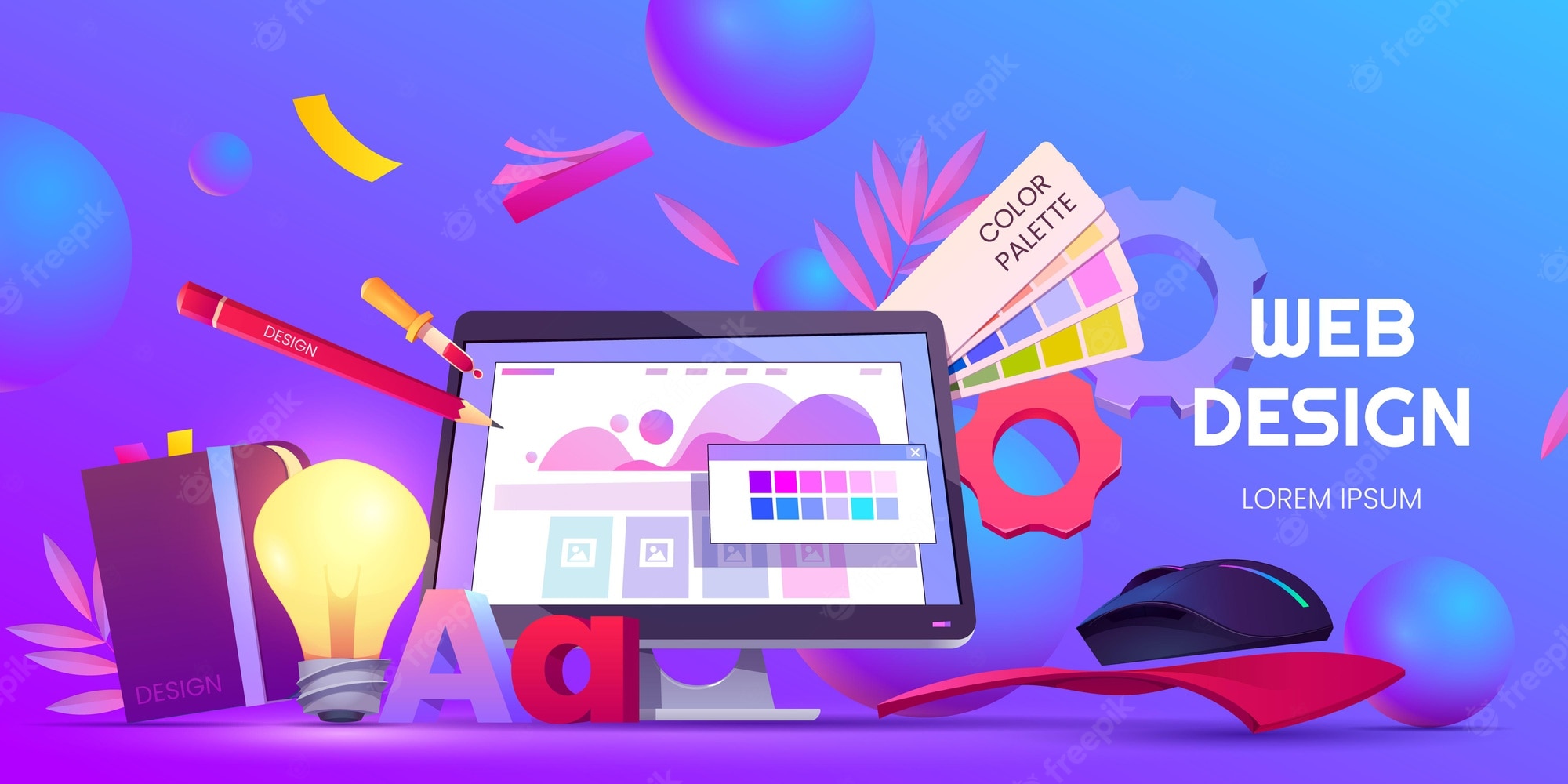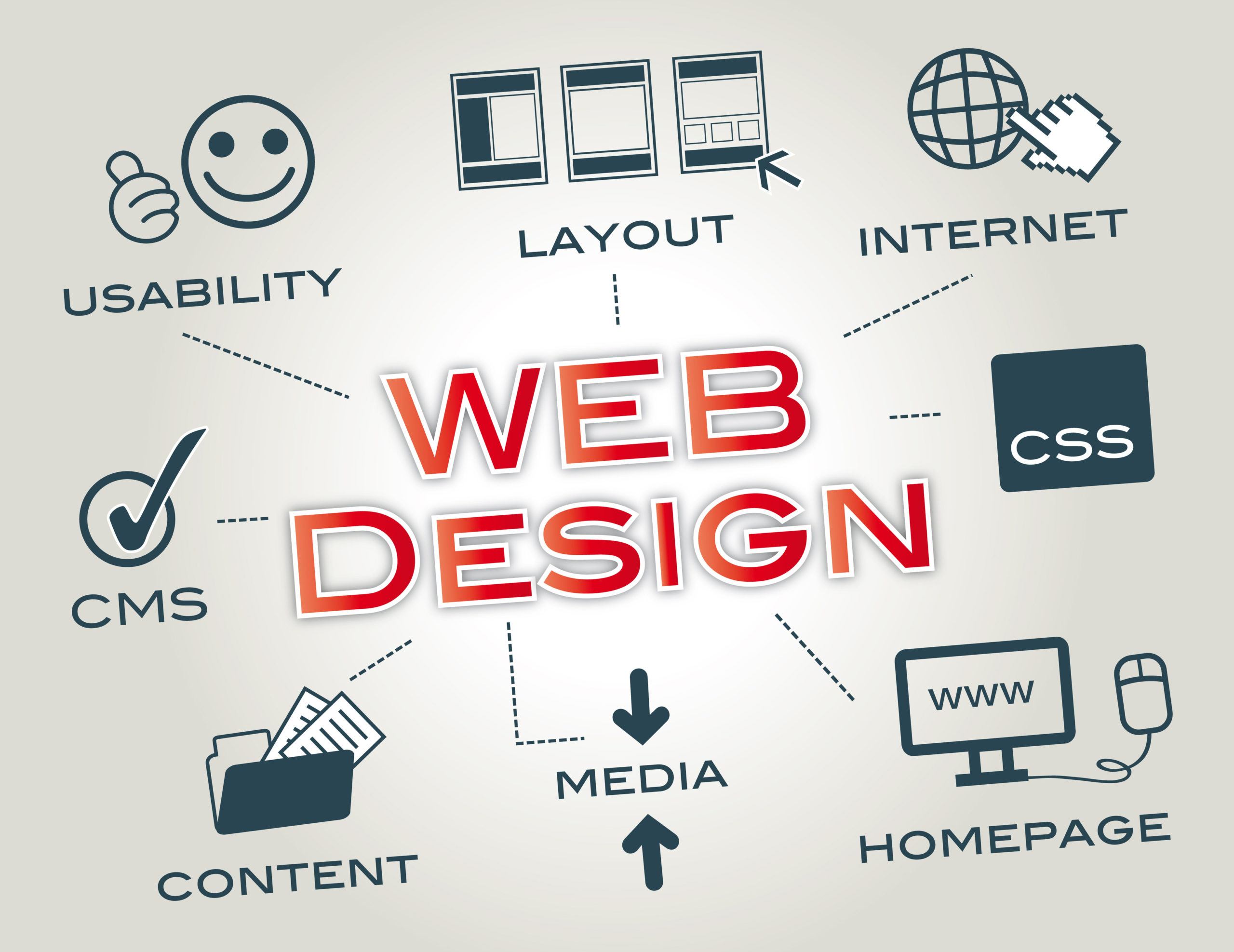Why website navigation is a critical factor for any Website Design Agency project
The Significance of User Experience in Efficient Web Design Techniques
User experience (UX) acts as a cornerstone in effective web design strategies. It forms how users communicate with a site, affecting their satisfaction and possibility of returning. A well-designed UX can boost involvement with user-friendly navigation and receptive formats. Forgeting these elements may lead to stress and enhanced bounce rates. Recognizing the ins and outs of UX is vital for developers intending to create engaging digital experiences that resonate with diverse target markets. What variables truly drive successful user involvement?
Comprehending User Experience and Its Influence On Layout
Although user experience (UX) is usually perceived as a mere facet of web design, it essentially forms exactly how customers engage with an internet site. UX incorporates all facets of the user's communication, including use, ease of access, and total fulfillment. A favorable UX cultivates interaction, motivating customers to check out the website and return in the future. Conversely, an adverse experience can lead to stress, leading to high bounce rates and lost opportunities for conversion.
Layout components like navigating, content, and layout company play essential roles fit this experience. Efficient UX style expects user requirements and choices, making certain that information is aesthetically enticing and conveniently obtainable. In addition, recognizing user habits via analytics can give beneficial understandings, informing layout decisions that enhance usability. Eventually, an extensive understanding of UX allows designers to develop sites that not only attract individuals but likewise advertise meaningful communications that align with company objectives and user expectations.
Secret Concepts of Effective User Experience
Effective user experience rests on a number of key concepts that boost web site functionality and interaction. Instinctive navigating design, receptive design basics, and the relevance of visual power structure are important elements that add to a smooth communication in between individuals and internet content. Recognizing these principles enables designers to produce more accessible and user-friendly electronic environments.
User-friendly Navigating Style
Intuitive navigation style offers as a vital entrance to their total experience when users experience a website. Reliable navigating permits customers to easily find the information they seek, improving their interaction with the website. Secret concepts include clear labeling, sensible organization, and regular positioning of navigating aspects. Tags must be simple, allowing customers to anticipate the content they will discover. A well-structured pecking order helps customers recognize the partnership between different areas, directing them via the site flawlessly. Furthermore, responsive menus and easily accessible links contribute to a fluid experience throughout tools. By prioritizing instinctive navigating, designers can significantly reduce user irritation and increase interaction, ultimately fostering a favorable assumption of the website and its material.
Receptive Design Essentials
A well-structured navigating system normally brings about the need for a responsive layout, which is vital in today's varied electronic landscape. A responsive format guarantees that websites function seamlessly across different gadgets, including smartphones, desktops, and tablets. This adaptability boosts user experience by enabling web content to be conveniently obtainable and visually coherent, no matter display size. Trick principles of receptive layout consist of fluid grids, adaptable images, and media inquiries, which promote excellent watching. Furthermore, focusing on touch-friendly components enhances interaction on mobile devices. By executing a responsive layout, developers can accommodate customers' needs, minimize bounce prices, and increase engagement. Eventually, a well-executed responsive design cultivates a positive user experience, urging visitors to explore the internet site even more.
Aesthetic Hierarchy Relevance
Aesthetic power structure plays an important duty in directing users via a website, making sure that essential details records their attention initially. By purposefully making use of size, comparison, spacing, and shade, developers can produce a clear path for users to comply with. Larger aspects usually draw the eye, indicating their importance, while contrasting shades can highlight phone call to action. In addition, consistent alignment and collection of related web content improve understanding, making navigation user-friendly. Effective usage of aesthetic power structure not only boosts usability but also sustains the general aesthetic of the website, cultivating a positive user experience. When users can easily recognize one of the most critical details, they are more probable to engage with the material, resulting in enhanced satisfaction and communication with the website.
The Duty of Use in Web Design
Usability plays a vital role in web design, specifically via navigating simplicity and adherence to availability standards. Reliable navigating boosts user contentment by enabling site visitors to locate info promptly and with ease. Conference availability standards assures that all users, no matter of their capabilities, can efficiently engage with the internet site.
Navigation Simpleness
Simplicity in navigating stands as a cornerstone of effective web design, greatly influencing user experience. A structured navigation system permits users to locate details rapidly and without effort, minimizing frustration and enhancing fulfillment. Clear labeling and sensible framework are crucial aspects, assisting users easily with the website. Repetitive links or overly complicated food selections can confuse individuals, leading to boosted bounce prices. Furthermore, mobile responsiveness should be taken into consideration, making certain navigating continues to be simple throughout gadgets. Reducing and prioritizing necessary web pages mess even more supports user interaction. Efficient navigating not only promotes a positive experience but additionally encourages individuals to discover the website better, inevitably leading to greater conversion prices. Hereof, navigation simplicity works as an essential aspect in the total effectiveness of web design approaches.
Access Criteria
User involvement is greatly improved when internet sites stick to availability requirements, guaranteeing that all customers, no matter their capabilities, can browse and communicate successfully. Conformity with these standards not only expands the target market but also boosts general user satisfaction. Accessible layout includes attributes such as message choices for pictures, keyboard navigation, and enough color comparison, which help with use by individuals with specials needs. On top of that, applying these requirements can favorably affect search engine optimization (SEO) by improving website framework and clarity. As web design develops, prioritizing availability ends up being crucial in promoting an inclusive electronic setting. By accepting these criteria, designers add to an extra equitable net, eventually driving user loyalty and involvement.
Importance of Responsive Style for User Involvement
As customers increasingly accessibility internet sites with a range of gadgets, the significance of responsive style ends up being extremely important for involving users efficiently. Receptive style guarantees that a site adjusts perfectly to different screen dimensions, giving an optimal watching experience regardless of the tool utilized. This flexibility enhances user interaction by assisting in simpler navigation and interaction with material.
When users run into a web site that is responsive, they are more likely to stay longer, explore further, and return in the future. A well-designed responsive format minimizes the irritation often connected with zooming and scrolling on smaller sized screens, thus lowering bounce rates. In addition, responsive style can positively affect online search engine he said rankings, as internet search engine focus on mobile-friendly websites. In today's electronic landscape, where mobile use continues to rise, carrying out receptive design is not just valuable, but vital for keeping user engagement and guaranteeing a positive experience across all gadgets.
Enhancing Load Times for Better User Fulfillment

To boost load times, web designers must focus on optimizing pictures, leveraging web browser caching, and decreasing HTTP demands. Additionally, employing Content Shipment Networks (CDNs) can quicken content delivery by distributing it throughout numerous geographic areas. Streamlining code, such as compressing CSS and JavaScript documents, additionally adds to quicker packing rates.
Ultimately, a commitment to enhancing tons times not just enhances user satisfaction however also enhances brand name commitment and improves the probability of repeat sees. A swift, seamless experience is necessary for keeping customers and fostering positive communications.
The Influence of Visual Pecking Order on User Communication
Visual pecking order works as a crucial component in guiding user interaction on an internet site. By organizing web content in a manner that focuses on information aesthetically, designers can influence how users involve and browse with a site. This pecking order is developed via different design strategies, consisting of size, color, contrast, and spacing. For instance, bigger typefaces or strong colors accentuate crucial components, such as contact us to activity or headlines, while restrained colors and smaller sized typefaces can indicate subservient information.
Reliable aesthetic pecking order helps customers swiftly identify what is essential, reducing cognitive tons and improving use. It enables for user-friendly navigation, making it less complicated for individuals to locate what they need without aggravation. As individuals connect with a web site, a well-structured visual pecking order promotes an extra gratifying experience, inevitably causing greater interaction and conversion prices. Designers have to additional reading prioritize these concepts to develop a effective and user-centered web environment.
Measuring User Experience: Methods and devices

Regularly Asked Inquiries
Exactly How Can I Boost My Website's User Experience on a Budget plan?
To improve a web site's user experience on a budget, one can maximize web page lots speed, streamline navigation, execute responsive layout, boost material clarity, and gather user comments for constant improvements, making sure a gratifying site visitor experience.
What Are Usual User Experience Mistakes to Prevent in Web Design?
Usual user experience errors in web design include messy designs, bad navigation, slow-moving packing times, lack of mobile responsiveness, neglecting access, inconsistent branding, and falling short to prioritize user comments - agency for web design. Each can substantially impede overall site effectiveness
How Commonly Should I Update My Site for Better User Experience?
Internet sites ought to be upgraded regularly, Full Report preferably every couple of months, to preserve ideal user experience. Frequent updates assist address functionality concerns, rejuvenate material, and adjust to altering user demands, ensuring the website remains appropriate and interesting.

Can User Experience Impact Search Engine Optimization Rankings on My Website?
User experience can greatly impact search engine optimization rankings, as search engines focus on websites that offer seamless navigating, quick loading times, and appealing material. A favorable user experience can cause reduced bounce prices and higher search exposure.
What Role Does Access Play in User Experience Layout?
Ease of access plays a vital role in user experience design by making certain that all individuals, no matter capacities, can communicate and browse with an internet site effectively. This inclusivity enhances general fulfillment and interaction among varied individuals.
User experience (UX) is commonly perceived as a simple element of internet layout, it essentially shapes just how individuals engage with a web site. User engagement is substantially enhanced when websites adhere to ease of access standards, guaranteeing that all users, regardless of their capacities, can navigate and interact successfully. Gauging user experience (UX) is vital for comprehending how successfully an internet site meets the needs of its customers. In addition, functionality testing, where actual customers navigate the website while observers note troubles, supplies direct comments on user experience. Usual user experience blunders in internet style consist of chaotic layouts, poor navigating, slow-moving packing times, absence of mobile responsiveness, disregarding accessibility, irregular branding, and failing to focus on user feedback.